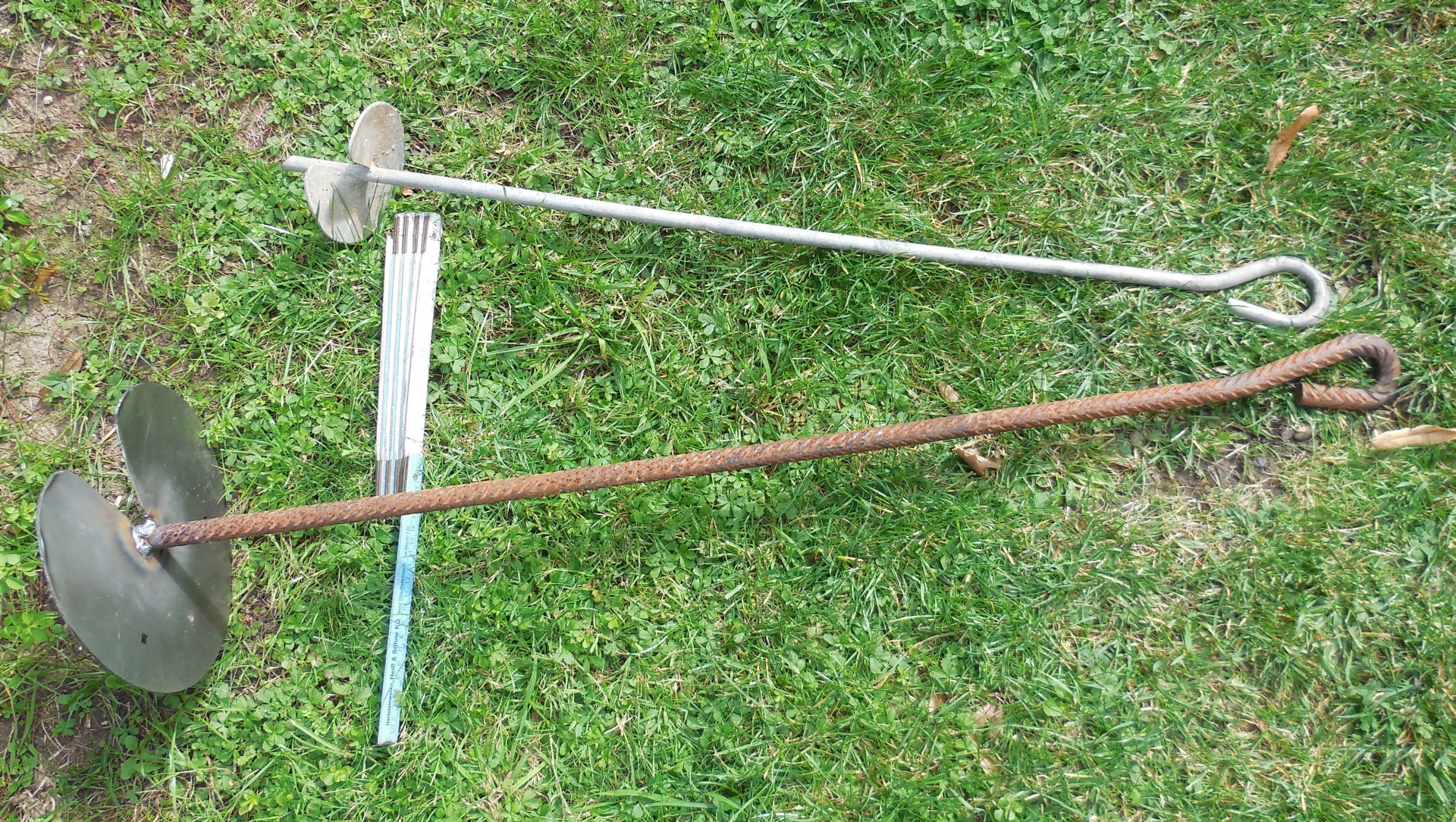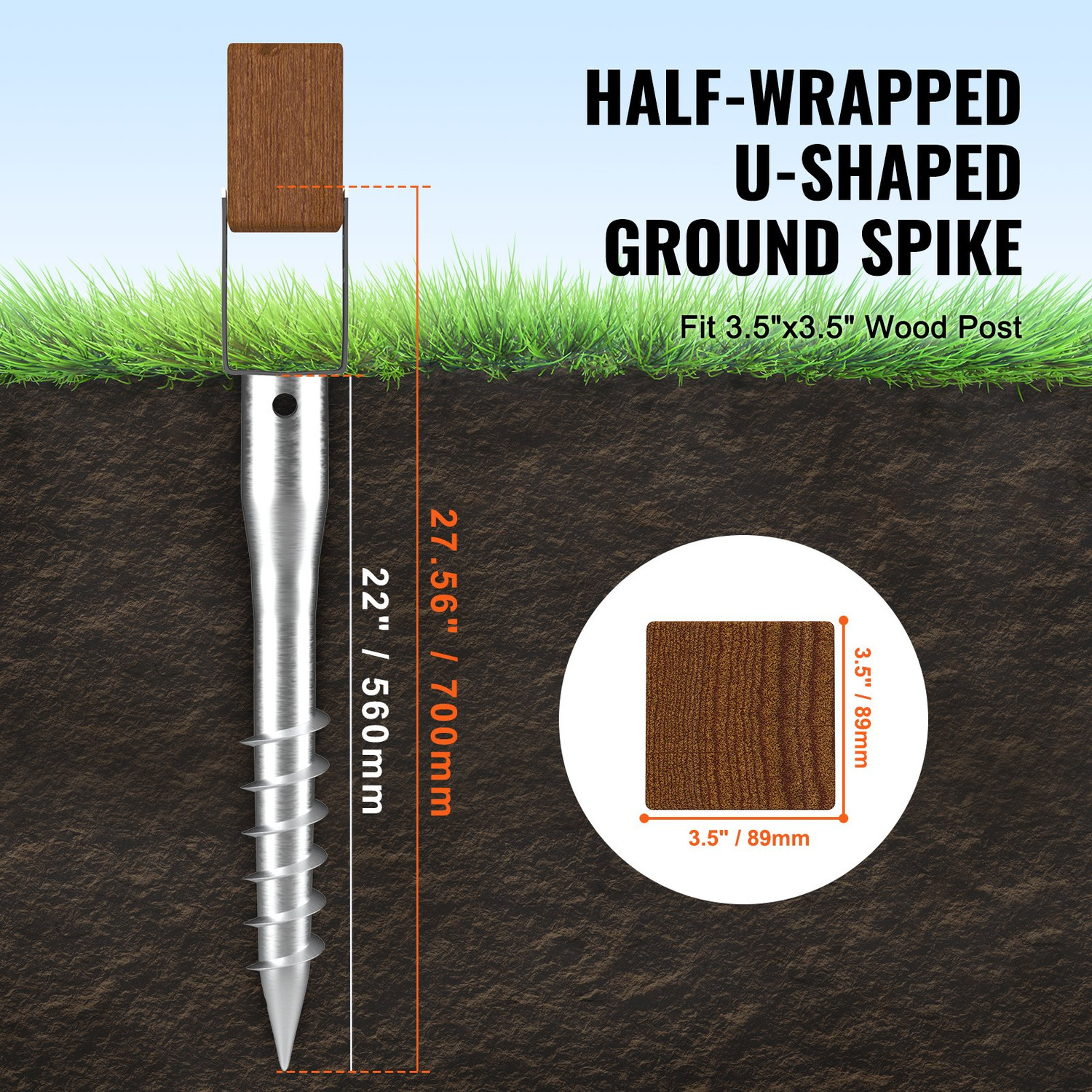What Makes heavy-duty earth anchors So Reliable
Wiki Article
Just How Sturdy Earth Anchors Job: A Comprehensive Overview to Soil Anchoring Solutions
Heavy-duty Earth anchors play an important function in providing stability and support in various building and construction applications. By embedding deeply into the ground, they withstand side and vertical pressures effectively. Various kinds of supports cater to different dirt problems, making them versatile. Comprehending their mechanics and setup methods is important for making best use of efficiency. What elements influence their effectiveness, and exactly how do they compare to traditional techniques? The responses might amaze you.Recognizing Sturdy Earth Anchors
Heavy-duty Earth supports function as vital components in numerous building and landscape design tasks, providing security and support in tough soil conditions. These anchors function by being installed right into the ground, where they resist side and upright forces. Their design permits for protected accessory to frameworks, guaranteeing they stay secured versus soil activity or exterior loads.The efficiency of sturdy Earth supports mostly depends on the kind of dirt and the support's installation depth. Appropriate installment methods are critical, as they identify the anchor's holding capability. Ecological aspects, such as moisture and freeze-thaw cycles, can also affect performance.These supports are often used in applications ranging from securing fences and maintaining walls to maintaining temporary structures during negative weather conditions. Comprehending the concepts behind heavy-duty Earth supports is necessary for specialists seeking to enhance the sturdiness and security of their jobs.Kinds Of Heavy-Duty Earth Anchors
Numerous kinds of heavy-duty Earth supports are designed to satisfy certain demands based upon dirt conditions and job demands. Helical anchors, including screw-like blades, work in softer soils, using high load capabilities and very easy installation. Driven anchors, which are inculcated the ground, are ideal for rough surfaces and offer immediate load support. Tie-back supports are frequently made use of in keeping wall surface applications, enabling for side support by securing right into the ground at an angle. An additional type is the cast-in-place support, suitable for concrete applications, as they are incorporated into foundations for enhanced security. Dirt screw anchors are flexible options that can be used in numerous soil kinds, offering trustworthy stress and compression capabilities. Each type serves distinct applications, ensuring security and safety and security in building and landscaping jobs. Understanding these options enables educated decisions in choosing the appropriate Earth securing option.The Mechanics of Soil Anchoring

Comprehending the technicians of soil anchoring calls for an evaluation of numerous kinds of Earth anchors and their installation methods. Each support kind presents one-of-a-kind features that affect its effectiveness in various dirt problems. Proper setup techniques are vital for taking full advantage of the securing system's stability and efficiency.
Types of Earth Anchors
Earth anchors, necessary elements in dirt anchoring systems, been available in numerous kinds, each designed for particular applications and dirt conditions. The most typical kinds include screw supports, which are turned into the ground, offering strong side resistance. Helical anchors feature blades that permit effective installation in different dirt kinds, making them appropriate for both temporary and permanent applications. Driven anchors, usually made from steel, are inculcated the dirt and are effective in rough or dense settings. Auger anchors use a helical layout to facilitate installation in softer dirts. Finally, plate supports consist of a level plate hidden horizontally, dispersing lots over a larger area, perfect for applications needing high tons capabilities in natural dirts.Installation Strategies Clarified
Proper installation strategies are essential for the performance of soil anchoring systems. The process usually begins with site evaluation, validating the selected place can support the anchor's tons. After figuring out the proper anchor kind, proper opening depth and angle need to be developed. The setup entails driving the anchor into the ground using customized devices, such as hand-operated or hydraulic chauffeurs, to attain finest embedment. Post-installation, tensioning the support is essential to guarantee security; this is typically verified with load screening. Furthermore, surrounding dirt problems ought to be kept an eye on to avoid displacement. Following these methods not just boosts the anchor's performance however likewise lengthens its lifespan, supplying dependable assistance for different applications.Applications of Heavy-Duty Earth Anchors
While heavy-duty Earth supports are typically associated with building and construction and landscape design, their flexibility reaches a variety of applications throughout different industries. In civil design, they supply essential assistance for keeping wall surfaces, ensuring stability in areas vulnerable to soil disintegration. The aquatic sector utilizes these anchors for protecting docks and marinas, stopping movement triggered by trends and currents. Furthermore, in the telecom industry, sturdy Earth anchors are significant for stabilizing cell towers and various other tall frameworks versus wind pressures. Agricultural applications additionally benefit, as these anchors can safeguard structures like greenhouses and livestock fence, guaranteeing they stand up to harsh weather conditions. In renewable energy jobs, such as wind farms, Earth supports play a crucial function in protecting generator foundations, improving overall safety and performance. This broad variety of applications highlights the adaptability and integrity of sturdy Earth supports across numerous fields.Benefits Over Typical Anchoring Techniques
Traditional anchoring approaches have actually long been counted upon for stability, durable Earth anchors offer substantial advantages that enhance efficiency and effectiveness. One major benefit is their premium load-bearing capability, which permits them to endure greater forces without failure. This strength makes them perfect for demanding applications, such as in construction and utility installations.Additionally, heavy-duty Earth anchors are made for deeper setup, supplying greater stability in different soil conditions, consisting of sandy or loosened soils. Their resistance to rust and environmental factors assures a longer life expectancy and decreased upkeep prices compared to traditional methods.Moreover, these anchors can be installed with minimal disruption to the surrounding location, protecting the stability of the landscape. On the whole, heavy-duty Earth anchors provide a reliable and trusted option for anchoring requirements, surpassing the constraints usually connected with typical anchoring methods.Installment Process and Best Practices
The installation procedure for soil securing services starts with detailed prep work and website assessment to ensure peak efficiency. Following this, a step-by-step setup overview supplies clear directions for efficient execution (soil anchoring solutions). Sticking to these best practices is necessary for Check Out Your URL achieving lasting and dependable anchoring resultsPrep Work and Site Analysis
Effective prep work and thorough site examination are vital actions in the setup of dirt securing remedies. Prior to installment, the dirt kind have to be assessed to identify its bearing capability and viability for anchoring. Performing a geotechnical survey can give crucial details concerning dirt structure, wetness levels, and potential ground movement. Additionally, determining existing frameworks, plant life, and utilities is vital to stay clear of interference during installation. The location ought to be free from debris and barriers to ensure secure access for equipment. Climate condition need to additionally be kept track of, as adverse conditions can impact both security and installment efficiency. By carefully preparing the website and reviewing all relevant factors, the possibility of successful anchor performance is significantly enhanced.Step-by-Step Installation Overview
A thorough setup procedure is crucial for achieving excellent performance of dirt anchoring options. The installment begins with choosing the proper anchor type and assuring the website is free from particles. Next, correct hole placement is determined based upon lots needs. Once the location is developed, openings are pierced to the specified depth and size making use of the correct tools. The support is then inserted right into the opening, seeing to it it is straightened properly. After safeguarding the anchor, soil is backfilled and compressed to boost stability. It is necessary to adhere to manufacturer guidelines throughout the procedure. A post-installation evaluation validates that the supports are properly positioned and functioning as intended, providing trusted support for the designated application.
Maintenance and Inspection of Earth Anchors
Normal upkeep and inspection of Earth supports are crucial for making sure long-lasting performance and security. Periodic checks permit the early detection of concerns such as corrosion, loosening, or soil activity. Inspectors ought to try to find indicators of corrosion or deterioration on the anchor parts, specifically at the link factors. In addition, the surrounding soil ought to be examined for erosion or modifications in dampness web content, which can impact anchor effectiveness.It is a good idea to establish a regular examination schedule, preferably you could look here at least annually, relying on ecological problems. During evaluations, all noticeable parts must be cleaned up to eliminate dust or particles that might hide potential issues. Any type of indicators of distress, such as turning frameworks or unusual settling, need to motivate immediate analysis. Appropriate paperwork of examinations can help in monitoring support performance gradually and facilitate timely maintenance actions, making sure the anchors continue to be useful and reputable.Frequently Asked Questions
What Materials Are Heavy-Duty Earth Anchors Usually Made From?
Sturdy Earth supports are generally constructed from durable materials such as galvanized steel or stainless-steel, making certain toughness and resistance to rust. These products offer durable assistance and stability in different soil conditions and applications.How Do Soil Problems Affect Support Efficiency?
Soil problems greatly influence anchor performance. Elements such as dirt type, moisture content, and compaction influence the anchor's grip and stability, with cohesive dirts usually giving much better resistance than sandy or loosened soils, influencing overall efficiency.
Can Heavy-Duty Earth Anchors Be Reused After Elimination?
Heavy-duty Earth anchors can be reused after elimination, given they are checked for damages and wear. Proper cleansing and upkeep enhance their longevity, ensuring reliable performance in subsequent installments when problems allow for safe reinstallation.What Are the Ecological Impacts of Utilizing Earth Anchors?
The environmental effects of making use of Earth anchors include potential soil disruption, interruption of local ecological communities, and possible contamination of groundwater. Nonetheless, if made use of properly, their advantages commonly exceed these issues, advertising security in various applications.Exactly how Do I Select the Right Support for My Project?

Report this wiki page